Terry lilac: features and varieties
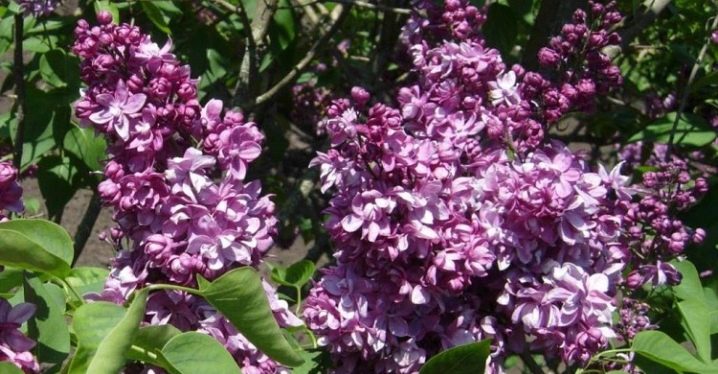
Lilac - a beautiful flowering shrub belongs to the olive family, has about 30 natural varieties. As for breeding, botanists have managed to breed more than 2 thousand varieties. They differ in color, shape, brush size, size, flowering time. The varieties continue to be bred to this day, which complicates their classification.
Often varieties of lilacs are named according to the color palette or the area of their growth, for example, Persian, Hungarian, Afghan. Most of all species grows in East Asia.
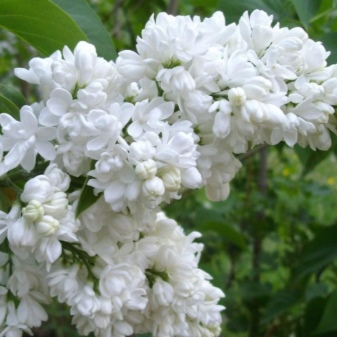
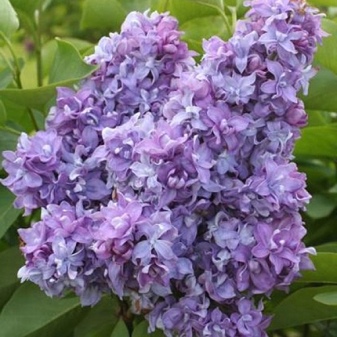
Characteristic
Terry lilac is a hybrid produced on the basis of common lilac, as well as other species (Amur, Persian, Hungarian). Terry varieties are very effective and expressive. Their bunches are fluffy, like terry clumps, because each flower from the 4-petal inflorescence releases more petals, forming a fluffy ball, and the whole bunch consists of these filled delicate flowers. Leaves are emerald-colored, usually pinnately separate, but there are also solid ones, it all depends on the variety. The shrub sheds them for winter. The plant forms a fruit in the form of a brown bivalve capsule with a pair of longitudinal seeds.
Terry lilac bushes grow smaller than their wild counterparts. But the brushes themselves can have impressive volumes, although some varieties are endowed with small clusters. In any case, the inflorescences abundantly cover the branches of the shrub, turning it into a fragrant blooming ball. Wild shrubs live up to 90 years, their breeding relatives live much less. Terry lilacs are great for gardens and parkland, and when trimmed regularly, they can form a delightful hedge. The shrub blooms from May to June. Bushes love sunny areas, in extreme cases, a little shade. In a completely shaded area, their inflorescences will be weak and sparse, and the branches will be elongated and thin.



Varieties
Due to the expressive fluffy shapes, terry species are distinguished into a separate category. The varied varieties of aromatic shrubs come in a wide color palette. You can find white, pink, blue, red, yellow varieties. Let's consider the most popular ones.
- "Edward Gardner" ("Flamingo"). One of the most amazingly beautiful species. A short bush with inflorescences of a rich pink hue. Varieties with a glossy sheen are especially good. The bush looks great in a hedge, combined with other varieties of lilacs. A hybrid species for abundant flowering needs regular watering and periodic feeding.
- "Aucubafolia". Semi-double lilac attracts attention with variegated leaves of an unusual color. From spring to late autumn, they delight with their amazing appearance. Contrasting ripples of green and yellow tones of foliage miraculously harmonize with the lilac, lilac, blue shades of the brushes of the plant.
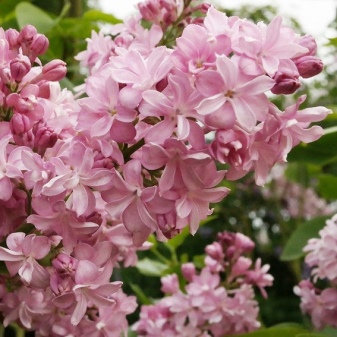
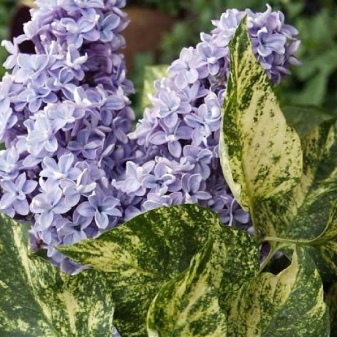
- Madame Lemoine. Unusual white lilac, the color of the sky and white cumulus clouds. It grows up to 3.5 meters. Inflorescences consist of several panicles, reaching 35 cm. Each flower grows up to three centimeters in diameter, has several corollas. Loves light and moisture, grows on fertile loamy soils.
- Monique Lemoine. This variety, like the previous one, was bred in France, but it is shorter, the plant height does not even reach 2 meters. The large, heart-shaped leaves have fresh, rich greens.Flowers in a thick white cloud frame the bush. The plant exudes a sophisticated spicy aroma. Blooms in late spring, gradually opening its buds.
Lilac does not like excess moisture and thick shade, but grows well in partial shade. Saplings take root well and tolerate winter well.
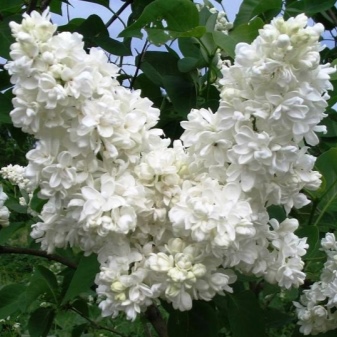
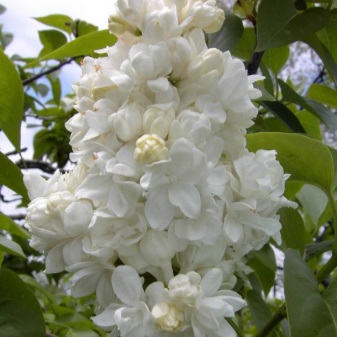
- "Taras Bulba". The name was given by Ukrainian breeders who developed the variety in the middle of the last century. The bush fits perfectly into the landscape design, as it has the correct lush spherical shape. Light green leaves create a small volume. Inflorescences reach 20 centimeters, lush, saturated color. Each flower looks like a miniature loose rose. The plant has a delicate, unstable aroma. Bushes are often planted in park areas, they need pruning and crown formation. Beautiful bouquets are formed in a vase. Lilac loves sunlight, does not really need watering, and tolerates winter well.
- "Pavlinka". The plant was bred in a Russian nursery, has a small growth, a spreading crown. When opened, the buds brighten, forming delightful two-tone clusters. Shiny dark leaves are small in size. Lilacs bloom in late spring for about three weeks. The variety is unpretentious, resistant to frost.
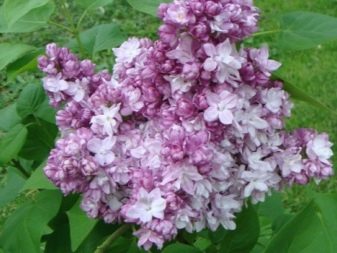
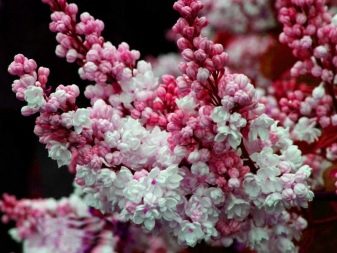
- "Beauty of Moscow". The variety was bred by the Russian breeder L. Kolesnikov. The bush is very beautiful; during the peak of flowering, fragrant panicles cover the entire crown, in fact, hiding the leaves under them. The honey smell of lilac leaves no one indifferent.
- "President Poincaré". A bush of French selection, very bright, colorful, with juicy green leaves and unforgettable inflorescences, moderately tall and spreading. Blooms from May to June, gradually revealing the pyramids of inflorescences. Has a rich aroma. It tolerates the absence of moisture and frost well.
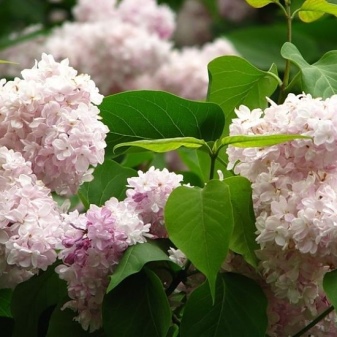
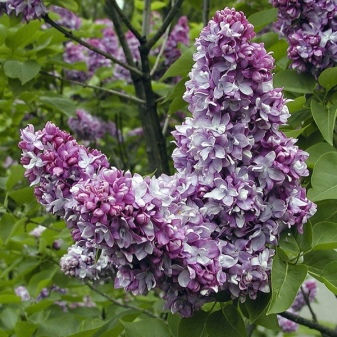
How to plant?
When choosing a terry lilac for planting, they often ask which one is better, grafted or self-rooted. Today, there is an extensive material of seedlings on their own roots, so you should not look for complexity. But there are situations when it is precisely the vaccination that is needed, it makes it possible to fix rare varieties of lilacs in a short period of time. Standard bushes are miniature, many can be satisfied with this because of the cramped boundaries in the garden. It is difficult to find flaws in self-rooted lilacs, except for the need to form a crown. But it is precisely by pruning that you can keep the rapid growth of the shrub or rejuvenate it by cutting an already aging plant onto a stump. Lilacs on their own roots are a real long-liver, there are cases when the bush lived up to the age of 200 years.
The plant is transplanted in late summer or early autumn so that it has time to take root before the onset of cold weather. You can postpone planting in spring, when the soils will already be warmed up, and the seedlings have not yet been touched by sap flow (until the buds swell). A place for planting is chosen in advance, an elevation is better so that the lilacs are not flooded by precipitation. The plant loves light and fertile soil. The depth of the hole is usually about half a meter, it is important that the root system is completely in the ground, and the lower branches rise a few centimeters above the surface, this will prevent the plant from overgrowing with spring shoots.
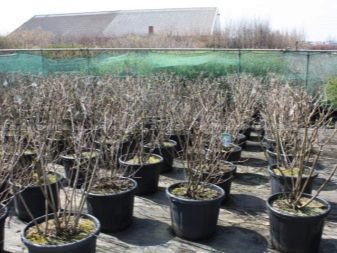

Many varieties of lilacs do not like the abundance of moisture, so the groundwater at the planting site should lie at a depth of one and a half meters, not higher. Abundant watering is necessary only during the planting itself, and then - a moderate sparing regime. It is necessary to ensure that the soil is not clayey and acidic, otherwise it will be necessary to extinguish the soil with dolomite flour. Every 3 years, the plant needs mineral fertilizing.
The bush is easy to plant, it is unpretentious to care for. For care, the lilac will delight with its lush magnificent inflorescences in the garden, and in the park, and in a bouquet on the table.


In the next video you will find an overview of the terry lilac "Lights of Donbass".



































































The comment was sent successfully.